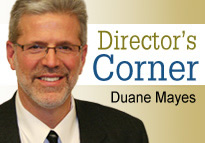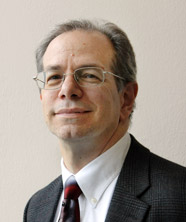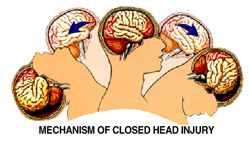|
Welcome, Jon Sherwood!
Jon Sherwood has long been the Medicaid go-to guy for DHSS, working behind the scenes on a wide range of projects from implementing Denali KidCare to planning for the arrival of the Affordable Care Act in Alaska. He has been with the department for more than two decades. He was initially hired to develop the home and community based waivers that are now a keystone of SDS. He spent eight years on the Alaska Commission on Aging, as the DHSS commissioner’s designee, and worked on projects with the Governor’s Council for Disabilities and Special Education when he was manager of Medicaid eligibility and long term care.
Now, he has accepted the position of deputy director of SDS. Sherwood will take the position vacated by Joanne Gibbens, who is retiring.
“We’ve been very fortunate to have Joanne’s expertise and dedication,” said Director Duane Mayes, “and I’m thrilled to have Jon bring his knowledge and background to the position. SDS staff, provider partners and clients all stand to benefit from his experience."
Sherwood begins his new chapter with DHSS on April 29.
Welcome, Jon!
Legislative update
A number of bills of interest to SDS stakeholders have made it through the House and Senate, and are now being reviewed to ensure they’re ready to pass to the Governor for his signature.
- The Silver Alert bill passed! This creates a new statewide alert system to help find missing vulnerable adults.
The system, which is similar to the nationwide Amber Alert program, will help local law enforcement notify the public when a mentally or physically impaired Alaskan adult goes missing. It will use a voluntary network of statewide and local newspapers, radio and television stations to rapidly alert the public that a vulnerable adult is missing..
- The Special Education Service Agency (SESA) was extended for eight more years, until June 30, 2021. SESA was created by the Legislature in 1986 to provide special education services to Alaska’s school districts. The major services provided are itinerant outreach services to students who experience autism, deafness, serious emotional disturbance and other disabilities as well as support and training of local school district special education personnel. SESA is funded through the Department of Education and Early Development, but governed by the Governor’s Council on Disabilities and Special Education. Continuation of SESA is important in order to enable school districts across the state, especially those in rural areas, to meet the needs of students with disabilities.
- Last year Senate Bill 74 passed, requiring private insurance coverage for autism spectrum disorders and creating the Comprehensive Autism Early Diagnosis and Treatment Task Force until Jan. 15, 2013, unless extended. This year House Bill 147 passed, extending the task force to Jan. 15, 2015.
The nine-member task force is required to make recommendations to the Legislature and the Governor for the development of a statewide comprehensive plan to support early diagnosis and treatment of autism and studying the effects of the state's providing insurance coverage for autism spectrum disorder. Appointments were approved by the Legislature on November 2, 2012.
- And, of course, we’re happy to see that the bill that changes references to intellectual and developmental disabilities passed as well. House Bill 88 removes the terms “mentally retarded” and “mental retardation” from Alaska statutes and replaces them with “intellectual and developmental disabilities”. Alaska joins 40 other states that have adopted more respectful and inclusive “people first” language in their state statutes.
State confronts brain-injury unknowns
Brain injury is a serious problem in Alaska, but progress in treatment and prevention is hampered by two things: a lack of resources specifically for Alaskans with brain injuries, and a lack of knowledge about brain injury in the state.
In 2010 the state Legislature tasked SDS with addressing both issues, and a statewide Traumatic and Acquired Brain Injury Program is taking shape.
The division immediately added some case management for people with brain injuries, and $2,500 mini-grants that people could use for health care, medical equipment — whatever helped.
Demand far exceeds supply, though, and the next steps are more time-consuming. Two program employees hired last year are overseeing two key components to improving Alaska’s response to brain injuries:
- Program manager Christy Wallace is exploring the feasibility of offering brain-injury case management through Alaska Medicaid.
- Analyst Sharilyn Mumaw is building a registry to track brain injuries, how people fare over time, and their access to treatment.
Another goal is to increase cooperation and understanding between groups addressing brain injuries, from medical providers to policymakers to patient advocates. Alaska held its first conference on the topic this year to network and learn from national experts.
“We’re behind in comparison to other states,” Wallace said she learned at the conference. With no specialized treatment available, “we send so many people out of state.”
Mild injuries without treatment can have very severe consequences later, said Mumaw – hence the state’s call for a comprehensive registry to track even mild injuries over time.
Alaska aims to collect data on both traumatic (from an external impact) and acquired (from an internal trauma like a stroke) brain injuries. The registry should help clarify prevention and care needs, but assembling it is complicated because much of what we want to know isn’t collected. The data sets that are collected are different enough that they are difficult to stitch together into a clear big picture.
|
Many traumas — from falling in an icy parking lot, for example — don’t get reported. The state’s injury tracking system notes injuries that keep a person in a hospital for at least 24 hours. A person who’s hit hard enough to black out for a few moments may be released after a few hours, or only visit a doctor, or not seek any medical treatment. But the 2009 death of actor Natasha Richardson shows simply falling on a ski slope can be fatal. She initially appeared fine and joked about her fall, said a news report at the time. The ski patrol insisted she see a doctor, but Richardson declined. She died two days later.
For more information on the TABI Program, contact Christy Wallace, Program Manager 465-5810.
![]()
2013 SDS Training news
Save the date! The second annual SDS Care Coordination Connections Conference will be Nov. 14-15, 2013, in the Millenium Hotel, Anchorage.
Our first annual care coordination conference was so well attended that we nearly maxed out the BP Energy Center. We’re moving to the Millenium to have more centralized conference space plus room for breakout discussion rooms. The hotel will also be able to offer special room rates to attendees. It’s close to the airport and offers plenty of parking onsite.
Participants told us the information and opportunities presented were meaningful and relevant to their practice, and they wanted more time to engage, so we stretched the conference to two days.
Look for registration notices to be posted in September. We hope you can come… Together we are helping to build great “Connections” with our community care coordinators!
For more information, check: http://dhss.alaska.gov/dsds/Pages/ops/senior-disabilities-servicetraining.aspx. Questions or comments? Email hss.dsdstraining@alaska.gov.



